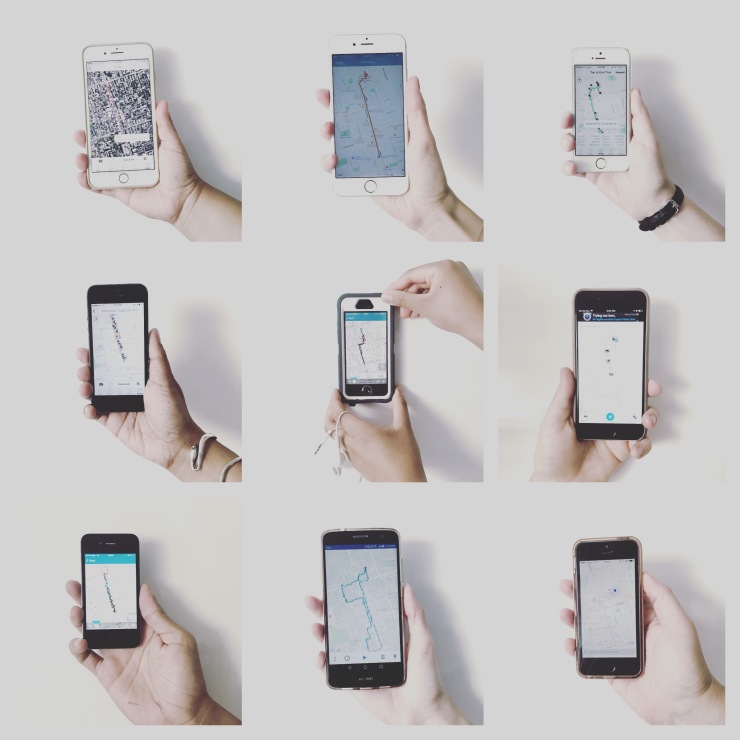DAY II | MAPPING EXERCISE
The Ethnography in Urban Settings workshop included two mapping exercises; one on each day.
On day one the workshop participants went out to sense the city and to try to map what they experienced, what they imagined in urban space, focusing on using their bodies and their own subjectivities and positionality as the main lenses through which they can experience urban space. This involved hand-drawing maps of their brief excursions into the city, especially on Spadina Avenue.
Following up on day one, day two was meant to augment that experience using digital technologies, which are both research tools and sources of data. Digital technologies are modern, contemporary, in wide circulation, and used by researchers and regular people in the urban spaces where research is conducted. For this exercise, we wanted to take these digital forms seriously as both a part of our daily lives and the daily interactions/experiences of the people we study. And they are also important and new kinds of tools for doing research and sources of digital data which are increasingly ubiquitous.

The instructions for this walk were to use a smart phone to produce visual and audio digital material to be later attended to an interactive digital map of Spadina Avenue in the center of Toronto. Participants were to use as many digital forms as desired. These included checking email, sending text messages, receiving phone calls, accessing maps, apps, websites, cameras, audio recording, etc. As participants moved through space, they were asked to pay attention to how interactions with these devices/technologies influenced their experience.
The participants were asked to think about the following questions:
- How do the digital technologies enhance or impede your mapping experience?
- Are you distracted and how?
- Are the distractions positive or negative?
The participants were also encouraged to use any other augmented reality applications that might digitally enhance their mapping experience. Suggested apps included:
- First Story Toronto
- Toronto Kensington Market Hidden histories
Discussion questions at the end of the mapping exercise were meant to stimulate a conversation about how digital technology can affect research based mapping in urban ethnography:
- How do you feel in this app-guided walk as compared to the walk on the
first day? - How does this experience change the ways you can sense the city?
- How can you imagine incorporating technology into your own research, as a
research tool, as research data, and as a research communication system? - Taking as a starting place the idea that all experiences are already always
mediated by social life, how does the interfacing with this kind of
technology contribute to that experience of mediation? - What is the potential value of augmented ethnography for urban
anthropology?
The final discussion involved participants going around the table to describe their own experiences with navigating the city while conducting a digital mapping exercise. Many of the participants noted the challenges of remaining stimulated while manipulating digital applications. They expressed how the ubiquity of access to digital devices has desensitized them to the importance of their use in research projects. Some felt much more stimulated by the exercise on the first day which involved using pen and paper to trace their route as they walked along Spadina. The reason for this is that few participants were accustomed to the use of analog methods like a drawing on paper as opposed to typing in their own projects.